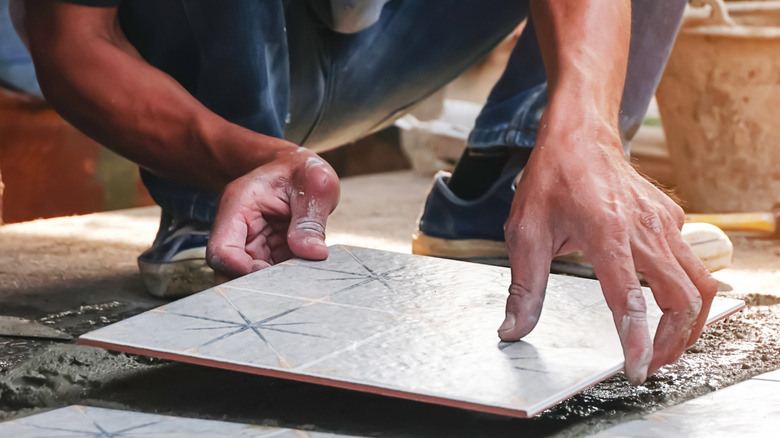What Size Spacers To Use When Installing Tile
Tile spacers make beautiful results easy when used properly. Insert them vertically in floor tile — and horizontally in wall tile — one pair per each edge of the tile. Avoid the mistake of placing them in the corner where four tiles meet. You have a choice among common sizes, which will depend on what size grout line you envision.
Tile spacers come typically in the following sizes: 1/16, 1/8, 3/16, 1/4 and 3/8 inches.
Tile spacers are reusable if handled carefully. Newer designs may allow you to rotate the spacer to use any of three different widths, or to set legs that resemble those of a spider beside all four intersecting tiles, sweeping out easily.
What Size for Your Job?
You have a lot of flexibility in terms of selecting a grout width.
- If you're using small-format tiles, such as those 8 by 8 inches and smaller, the tiles may come with built-in lugs that make spacers unnecessary. If you want a standard look, tile installers recommend grout lines of 1/16 inch for walls and 1/8 inch for floors.
- For regular-format tiles, between 12 by 12 and 16 by 16 inches, you can stay with those measurements or go up to 3/16, depending on the tile and the look you want.
- For large-format tiles, 18 by 18 inches and larger, you can actually get away with very tight grout lines of 1/16 inch or even 1/32 inch, usually created by the lugs. This creates a smooth final space that looks like solid tile.
When you install 4 by 4, or 6 by 6, bathroom tub tile, for example, you can set it closely at 1/6 inch for a standard look or wider if you want a dramatic effect. Even if a tile has built-in lugs, you can add spacers for a wider grout line.
Tip:
Wiggle a dental pick under tile spacers, after the mastic dries and before you grout the tiles, to pop them out.
